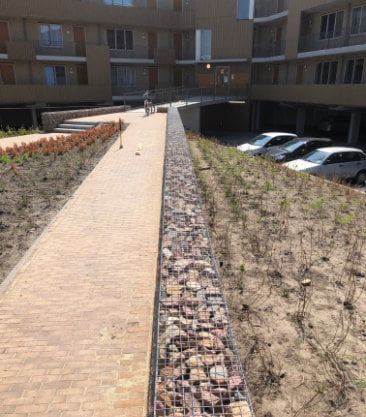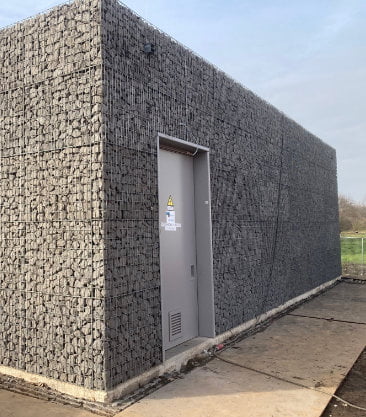
+31 (0)226 - 745992
+31 (0)226 - 745992
Downloads
Downloads

Shorelines and Soil Retention
Gabions and gabion mattresses are originally and still widely used for erosion protection along dynamic water bodies. They provide a durable shoreline finish without causing hydrostatic pressure or hindering natural development. Combining gabions with our other erosion control products is also possible.
These baskets not only serve as weight-bearing structures to retain dry soil, protect embankments, reinforce dikes and dam bases, or bridge elevation differences but can also be used for a stepped or pyramid-like construction for stability. “Reinforced soil” with continuous mesh for anchoring is a statically pure and material-efficient solution.
For eco-friendly shorelines, gabion mattresses can create a gradual and gentle slope. When rapid and targeted vegetation is desired, “green gabions” can be used, a combination of gabions and Aqua-Flora mats.


Woven Gabions
Gabion mattresses are made from woven panels with a hexagonal mesh opening. These panels are made of ‘galfan’ wire, an alloy of 90% zinc (Zn) and 10% aluminum (Al). They primarily serve as erosion protection for shorelines. For large-scale applications and when aesthetics are important, gabions made of welded mesh panels are typically used.
Welded Gabions
Soil retentions can be constructed with both woven and welded gabions. Welded gabions typically have a rectangular or square mesh opening and are standardly made from ‘galfan’ wire, a steel wire with an alloy of 90% zinc (Zn) and 10% aluminum (Al).

Ecology
Shorelines and soil retentions built from gabions also serve as vegetated “Ecowalls.” A small, rocky biotope is a rare ecosystem and can provide specialized flora and fauna with a habitat. This multifunctionality also demonstrates efficient use of space and is therefore a thoughtful approach to another scarce resource: space. In this way, gabions contribute to a sustainable and green solution for various ecological needs.

Fill Material
For filling the gabions, options include crushed natural stone, crushed rubble, rejected bricks, or other materials. Almost anything is possible, provided the fill is frost-resistant. It is also important that the gradation of the fill matches the chosen mesh, to prevent the fill from falling out.
It is also possible to fill gabions with soil. In this case, the gabions are lined on the inside with a soil-retaining cloth or coir fibers. An alternative is to opt for a green gabion, as mentioned earlier.

